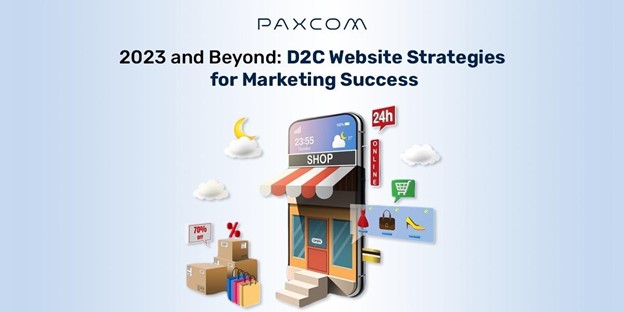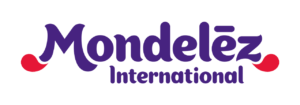In a rapidly evolving e-commerce landscape, Direct-to-Consumer (D2C) websites have emerged as a game-changer for businesses of all sizes. This guide explores the transformative potential of a D2C website in 2023, providing marketers with key insights, strategies, and an optimized approach for success.
Table of Contents
The D2C website Advantage
In a not-so-distant business landscape, imagine stepping into a world where traditional distribution channels no longer dictate the rules. It’s a world where the intricate dance between manufacturers, wholesalers, retailers, and customers has evolved dramatically, rewriting the narrative of how businesses engage with their audience. This is the era of the Direct-to-Consumer (D2C) model, where a paradigm shift in marketing dynamics has unlocked endless possibilities.
Picture a journey where you can skip the usual steps and reach your customers directly. In today’s digital world, marketing becomes your secret weapon in this D2C setup. But why is having this advantage such a big deal, you ask? Well, that’s what we’re here to explore.
The Shift to D2C: Meeting Consumer Expectations
Modern consumers demand a streamlined purchasing process, convenient shopping experiences, and a direct connection with brands. Many buyers visit a brand’s website and third-party channels before purchasing. Recognizing these preferences, brands have embraced an Omni-Channel Approach, gradually sidelining intermediaries. As a result, numerous brands now sell products directly from their own websites, following a Direct-to-Consumer (D2C) selling model.
Consumer expectation in regards to the rise of D2C websites:
Understanding D2C website Selling
D2C stands for Direct-to-Consumer, a revolutionary concept where manufacturers and brands eliminate intermediaries to promote and sell their products directly to consumers. This approach has replaced the traditional complex supply chain involving manufacturers, wholesalers, and retailers. Consumers increasingly prefer visiting a brand’s website for product research and purchases.
In D2C selling, there are no barriers between manufacturers and buyers, fostering open interaction. This enables manufacturers to understand customer expectations better while gaining more control over brand reputation, marketing, sales tactics, and pricing.
Key Steps for Launching Your D2C Brand
- Identify Your Niche: Conduct thorough market research to identify gaps in the market and launch a unique segment that addresses specific customer needs. Differentiate your products to draw a more extensive customer base.
- Select the Right E-commerce Website Builder: Choose an e-commerce website builder that aligns with your website’s critical functionalities and features. Popular options include BigCommerce, Shopify, Magento, WooCommerce, and nocommerce.
- Choose a Unique Domain Name: Your domain name is your brand’s online identity. Opt for a short, easily recognizable, and keyword-induced domain name.
- Create an Exceptional User Experience: Design a user-friendly, mobile-responsive, visually appealing website with a systematic and intuitive user interface. Prioritize product visibility, easy navigation, and smooth payment processes.
- Enhance Product Presentation: Showcase products with engaging visuals and detailed information. Address customer queries in product imagery and highlight what sets your products apart.
- Establish a Strategic Shipping Policy: Communicate your shipping policy, including estimated delivery times—partner with a reliable shipping service provider known for prompt service.
- Thoroughly Test Your Website: Conduct extensive testing to ensure all functionalities work smoothly and your site is mobile-optimized. Pay attention to design consistency and include customer testimonials.
- Implement Aggressive Marketing: Create a comprehensive marketing campaign that showcases product previews, promos, discounts, satisfied customer testimonials, and influencer marketing. Utilize SEO, SEM, email marketing, and other digital marketing strategies.
- Transparent Privacy and Return Policies: Clearly articulate privacy and return policies to boost customer confidence. Offer liberal return policies with free returns and quick refunds.
- Robust Customer Support: Provide efficient customer support with quick issue resolution and a Q&A section on your website. A responsive support team enhances customer satisfaction.
D2C Marketing Strategies for Short-term & Long-term Growth
Balancing short-term results with long-term sustainable growth is key. D2C marketing offers strategies that cater to both. While some D2C strategies provide quick results, others focus on long-term reliability.
Short-term Marketing Strategies for D2C Website:
- Helping new businesses build brand recognition through greater impressions.
- Capitalizing on quick sales during holidays, sales, and seasonal events.
- Generating rapid cash flow.
- Launching new products successfully.
- Supporting a multi-channel strategy.
Long-term Marketing Strategies for D2C Website:
- Investing in SEO and content marketing for sustained organic traffic.
- Increasing site visibility and reach through high-quality content.
- Improving sales and revenue without relying heavily on expensive ads.
- Engaging e-commerce shoppers at every stage of the buying process.
- Building lasting brand recognition.
- The Role of Social Media Commerce
Read this blog for more tips on marketing activities to grow your D2C website.
The Rise of Social Commerce
Social media has become a pivotal channel for D2C marketing and e-commerce. It allows brands to extend their reach, grow visibility, and direct traffic back to their websites. Common ad types include photo ads, story ads, video ads, carousel ads, collection ads, messenger ads, and on-platform shops.
The Importance of High-Quality Content
Quality content serves as the cornerstone of D2C website marketing. Channels such as search engines, social media, email marketing, and paid ads heavily rely on engaging content. Google’s EAT concept underscores the significance of high-quality content that meets users’ needs. To excel in D2C marketing, prioritize crafting useful, information-rich content, maintain a clear site hierarchy, incorporate relevant SEO keywords, emphasize user experience over search engine rankings, and steer clear of deceptive tactics.
2023: The Year of D2C Growth in India
The D2C sector in the Indian market has overcome disruptions caused by the pandemic and supply chain issues. While global concerns about growth and inflation persist, India continues to provide business opportunities. In 2023, marketing investments will require meticulous accountability, but the potential for success is immense.
Key Trends Shaping D2C Marketing in 2023
- Hyper-Personalization: A “one-size-fits-all” approach is no longer effective. The way forward is hyper-personalization tailored to individual tastes, requirements, and visions.
- Boosting Brand-Customer Relationship: Building emotional connections with customers is vital. Meaningful relationships can make customers loyal even in a competitive market.
- Social Commerce and Performance-Based Marketing: Social media, influencer marketing, and performance-based strategies will continue to gain prominence, offering growth opportunities.
- Omnichannel Strategies: Cracking offline sales will be critical for D2C brands. Strong unit economics and profitability will be non-negotiable.
- Scope for Growth: India’s young and eager population provides ample room for D2C brands to grow despite occasional challenges. Brands that navigate 2023 successfully will reap substantial rewards in the following years.
Conclusion
The direct-to-consumer (D2C) model has become increasingly popular as eCommerce continues to dominate the retail industry. With the rising number of online shoppers in India, D2C brands have the potential to generate significant revenue and establish a loyal customer base. The advantages of D2C include greater control over the brand image and customer experience and access to valuable customer data. To succeed in the D2C space, brands need to prioritize
As 2023 unfolds as the year of D2C growth in India, it’s time to seize the opportunities, adopt the right strategies, and partner with experts like Paxcom to ensure your success in the dynamic world of direct-to-consumer marketing. Connect with us at info@paxcom.net














